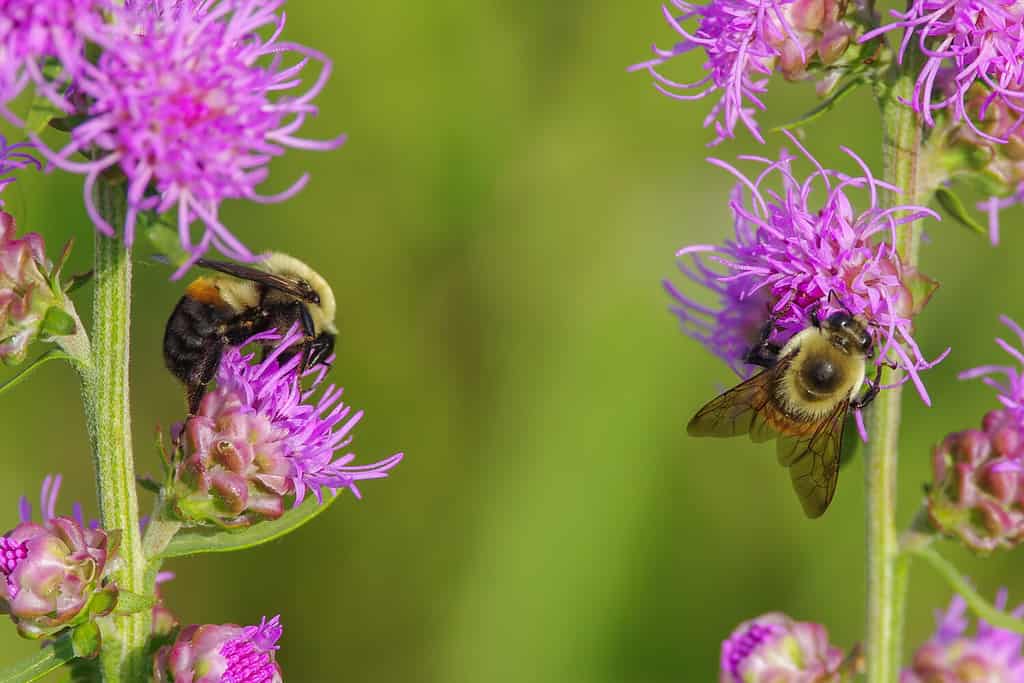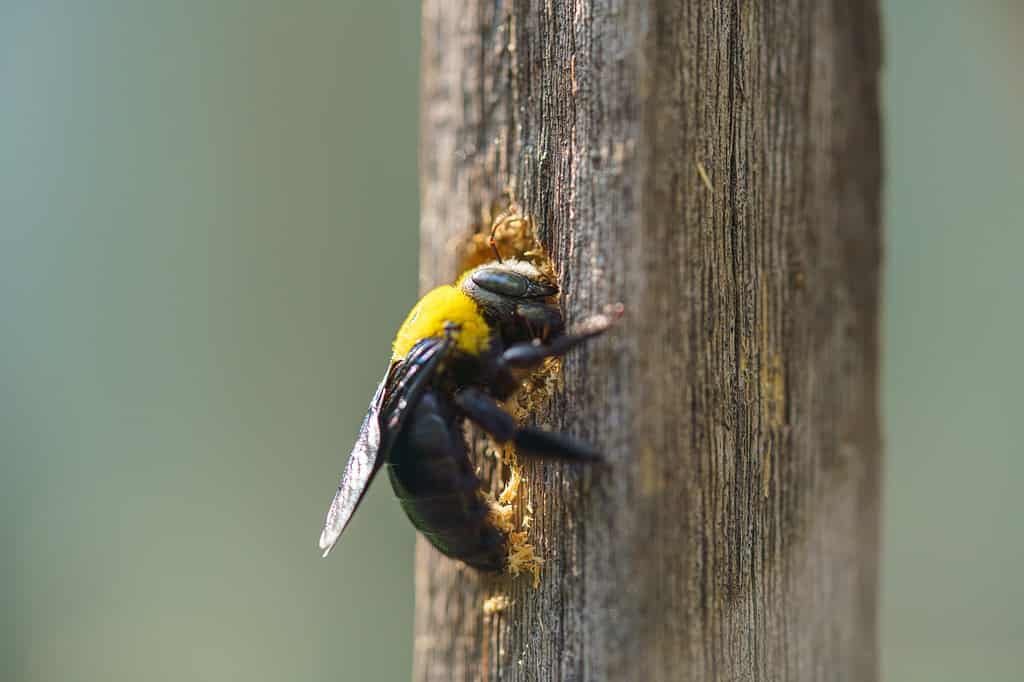Although bees and wasps are an essential component of nature, they can become a problem if they become drawn in and around your home. While you could call a neighborhood bee removal service if a colony has built a nest close to your house, there are natural remedies that can help keep bees at bay!
Save yourself time and money by testing out these bee trap hacks!

Bees are incredibly beneficial to gardens.
©natmac stock/Shutterstock.com
1. 2-Liter Bottle Trap
One empty 2-liter bottle, a sharp knife, and a stapler are necessary for this first bee trapper. Use caution when using a knife or pair of scissors. Split the bottle in half approximately five inches below the top.
Flip the section you have cut off upside down inside the bottle’s other half before securing it with a staple. In the absence of staples, glue or adhesive will likely suffice. Next, you’ll need to put a bait inside the bottle that will entice the buzzing bees to the trap.
Bee Trap Bait
The bait requires some sort of sugar mixture because wasps and bees adore sugar and need it to stay energized during a busy day. But bear in mind that, unlike wasps, bees normally stick to organic nectars until there isn’t any around.
Once this happens, these fuzzy insects will try to refuel their depleted bodies with your sweet mixture. Consider mixing sugar, syrup, nectar, or even soda with water or lemon juice to create a tasty solution.
2. Carpenter Bee Trap

Carpenter bees can tunnel into the wood on your property.
©media-ja/Shutterstock.com
If you have 30 minutes, $15, and a carpenter bee problem, consider this next trap. Purchase a 4×4 untreated piece of cedar or pine. Be sure to allow between five and eight inches between one block side and the required length of the trap.
Use a handsaw or circular saw to trim the block after marking the location of the cut. You’ll want to create the first passage that the carpenter bees will use to enter the trap. Make a measurement and label the center point on one of the cut ends.
Drill completely through the material using a power drill and a half-inch drill bit. The wood ought to have an apparent hole that extends its entire length. Drill three parallel holes at 45-degree angles, each of which should drive up toward and end at the middle hole.
This creates a network of tunnels for the bees. In order to prevent sunlight from shining down into the trap, make sure to drill the side holes at an angle that faces upwards. The six-inch-wide wood plank will serve as the bee trap’s roof.
Make sure the length you need is long enough to allow for an inch of overhang on each side before measuring and cutting. Remove a mason jar’s lid and put it over the block’s hole. The lid’s middle should be marked.
Make a hole in the middle of the lid using the half-inch drill bit. The bees’ passage from the wooden structure to the mason jar will be made possible by this cover. Use a hammer to tap the lid of the Mason jar into the base of the tunneled-out wood. Incorporate an eye hook onto the bee trap’s roof.
After the eye hook has been firmly fixed into the roof, attach it to the roof or a post nearest to the infestation by passing a short cord, wire, or rope through it.
3. Use a Sticky Solution

You can buy or DIY a sticky trap for all sorts of creatures.
©iStock.com/AlSimonov
Sticky traps are a great technique to catch bees with stingers if you’re trying to figure out the best way to get rid of bees in your garden. You can use bright yellow construction paper and the same solution previously mentioned to trap these insects.
It may be used indoors or outdoors because it does not include any harmful substances. To draw the bees, set the trap close to the nest. Put the trap in your outside garbage can after it’s full of bees.
Bait That Attracts Bees
You must use the right bait in order to lure specific types of bees. Some lures are extremely delicious and occasionally draw hummingbirds or honey bees. You can also use vinegar to keep honey bees and Mason bees away.
Carpenter bees are not bothered by vinegar’s smell, but honey bees are driven away from it. Furthermore, putting jelly or liquid dish soap on your bait can thicken the liquid and prevent the bees from escaping.

You can create a bee solution with ingredients already in your kitchen.
©Pixel-Shot/Shutterstock.com
Add a little vinegar to the entryway and something to thicken the liquid to produce the greatest bait for a carpenter bee trap to make your DIY carpenter bee traps and lures the most successful.
If you’re making the wood jar trap, consider spraying in a bit of pesticide as well. Add about an inch of water before screwing the jar onto the wood. The pheromones that the spray emits are what draw the insects in.
The insects fall into the water and drown after passing through the bee holes in the homemade trap. Clean any trap you create when a few bees have been caught, then repeat the procedure.
Thank you for reading! Have some feedback for us? Contact the AZ Animals editorial team.








